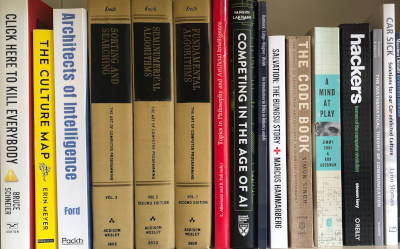Suggested readings week 20/2023

Prompt, and the injection of it
We hear a lot about generative artificial intelligence, large language models and Sam Altman's OpenAI. Machine Learning has been traversed by tremendous advances, ChatGPT being the most visible as it's used by millions today, and heart of thousands of very useful applications. Technology, software development and natural sciences are changing in a matter of months.
It usually happens that a disruptive innovation or a new technology (more of the second option here in my modest opinion) get widely adopted and appreciated, and only afterwards the specific risks posed buy a misuse of them are surfaced by scientists and solved.
Large Language Models interaction with prompts are subject to Prompt Injection as a sort of cyber attack (or perhaps more of a social engineering attack?). When I first read about it my first reaction was "well, this is too easy to be true!". Turned out this is true. Let me introduce you to:
Here is Prompt Injection explained, with video, slides, and a transcript.
https://simonwillison.net/2023/May/2/prompt-injection-explained/
Robotics on steroids
The promise of robotics as an autonomous technology has always been limited in the lack of available datasets on a scale comparable to large text corpora or image datasets. Extraordinary precision-affected and repetitive tasks are performed everyday by robots in production, surgery and logistics, while learning and inventing routes and movements has always been a slow moving frontier.
Today we introduce PaLM-E, a new generalist robotics model that overcomes these issues by transferring knowledge from varied visual and language domains to a robotics system.
This from Google Research could be huge. PaLM is in itself a very powerful large language model, but the trick was for the research team to add and ingest direct streams of sensor data. Training a language model on top of a (sort of) raw stream of data instead of transforming the stream first in a semantic, gives unbelievable results.
Useful to note that Danny Driess, author of the post and one of the leading researchers in the group, is a Student Researcher at Google and a PhD student advised by Marc Toussaint at TU Berlin. Not funding research leads to nowhere.
https://ai.googleblog.com/2023/03/palm-e-embodied-multimodal-language.html?m=1
Format Preserving Encryption
Format Preserving Encryption (FPE): the art of encrypting a message while preserving its basic formatting, and where the value itself is encrypted.
A basic usage would be for example to hide credit card details, by encrypting the values without breaking the format of websites input forms. But of course it can go far beyond that: what about re-engineering part of a product for encryption and privacy without disrupting communication protocols inside and outside of the product itself? A huge saving on investments.
Which is concerning today in the automotive industry thanks to the new regulations enforcing cybersecurity for cars.
Natural Capital and Externalities
Do you choose the product you buy by considering externalities? The name refers to costs imposed by businesses that are not paid for by those businesses. And most businesses wouldn't be able to pay for.
